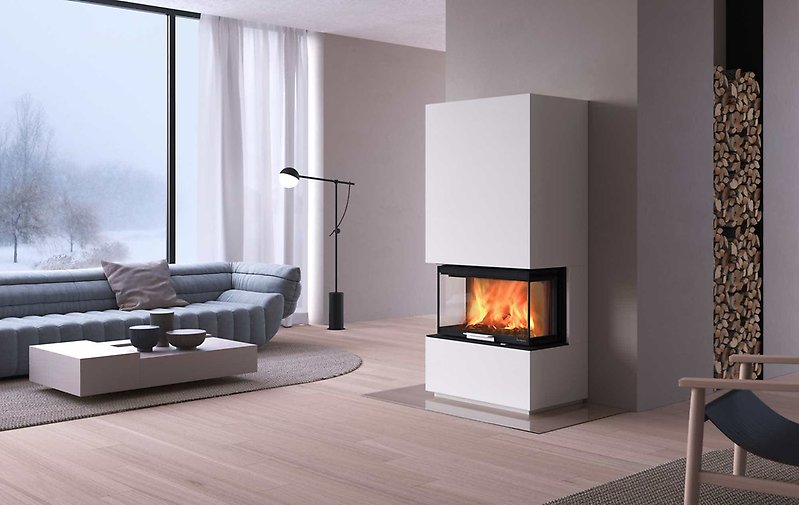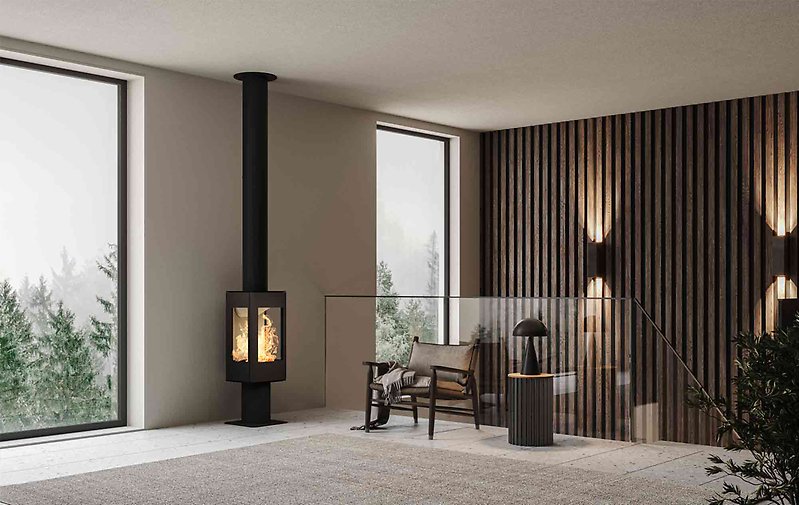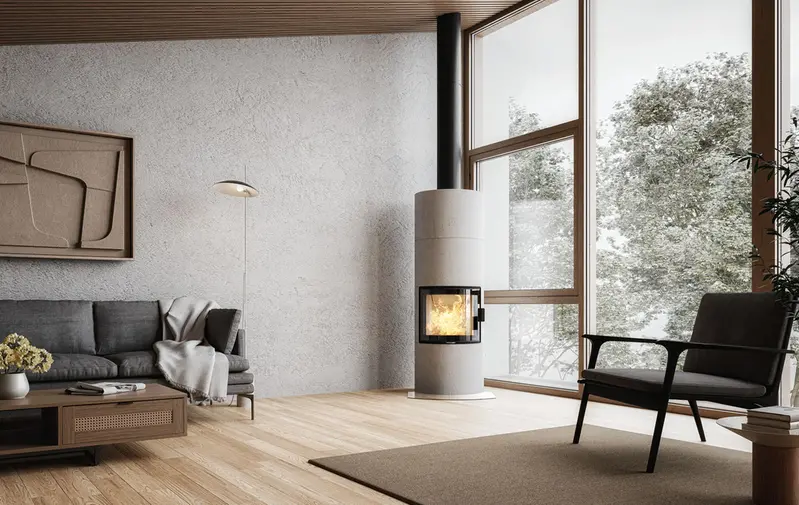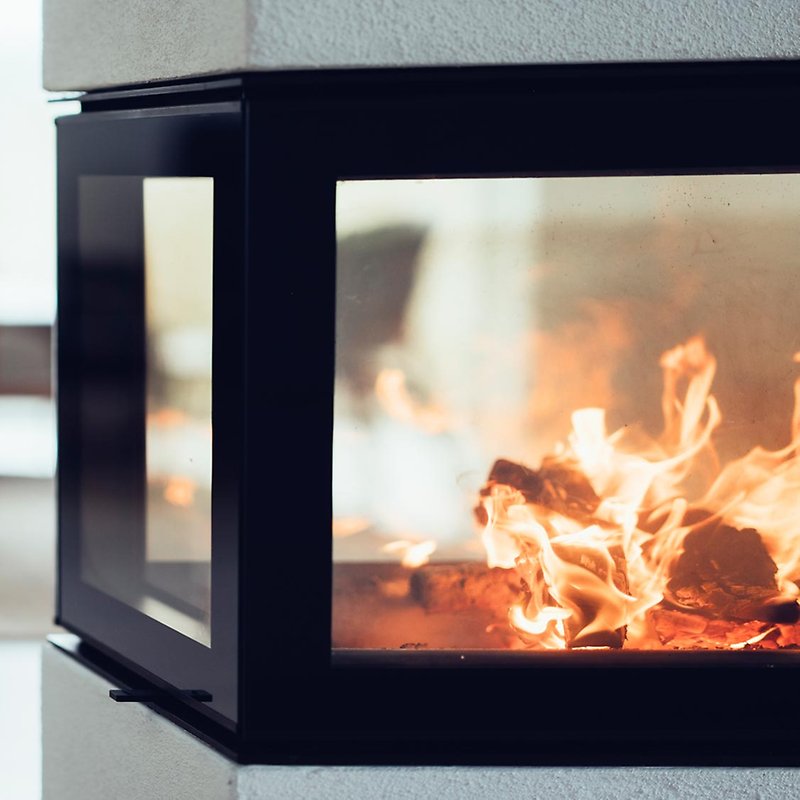Calculated heating area for fireplace and stove
The calculated heating area is an important factor to consider when using a fireplace for heating. This concept refers to the area within your home that the fireplace is designed to effectively heat. It is based on several factors, including the fireplace's nominal heat output, the insulation in the room, and general climatic conditions.
Calculated heating area
When choosing a fireplace or stove, it's essential to match the nominal heat output of the fireplace with the size of the area you want to heat.
This ensures not only a comfortable temperature but also optimal energy efficiency.
Understanding the calculated heating area helps you tailor the use of the fireplace to achieve the most efficient and economical heating while creating a cozy atmosphere in your home.
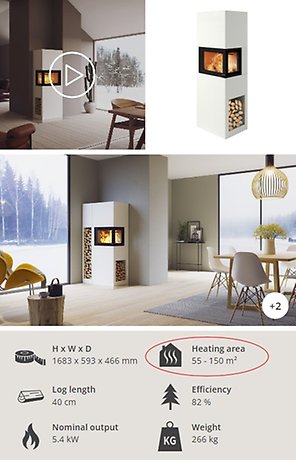
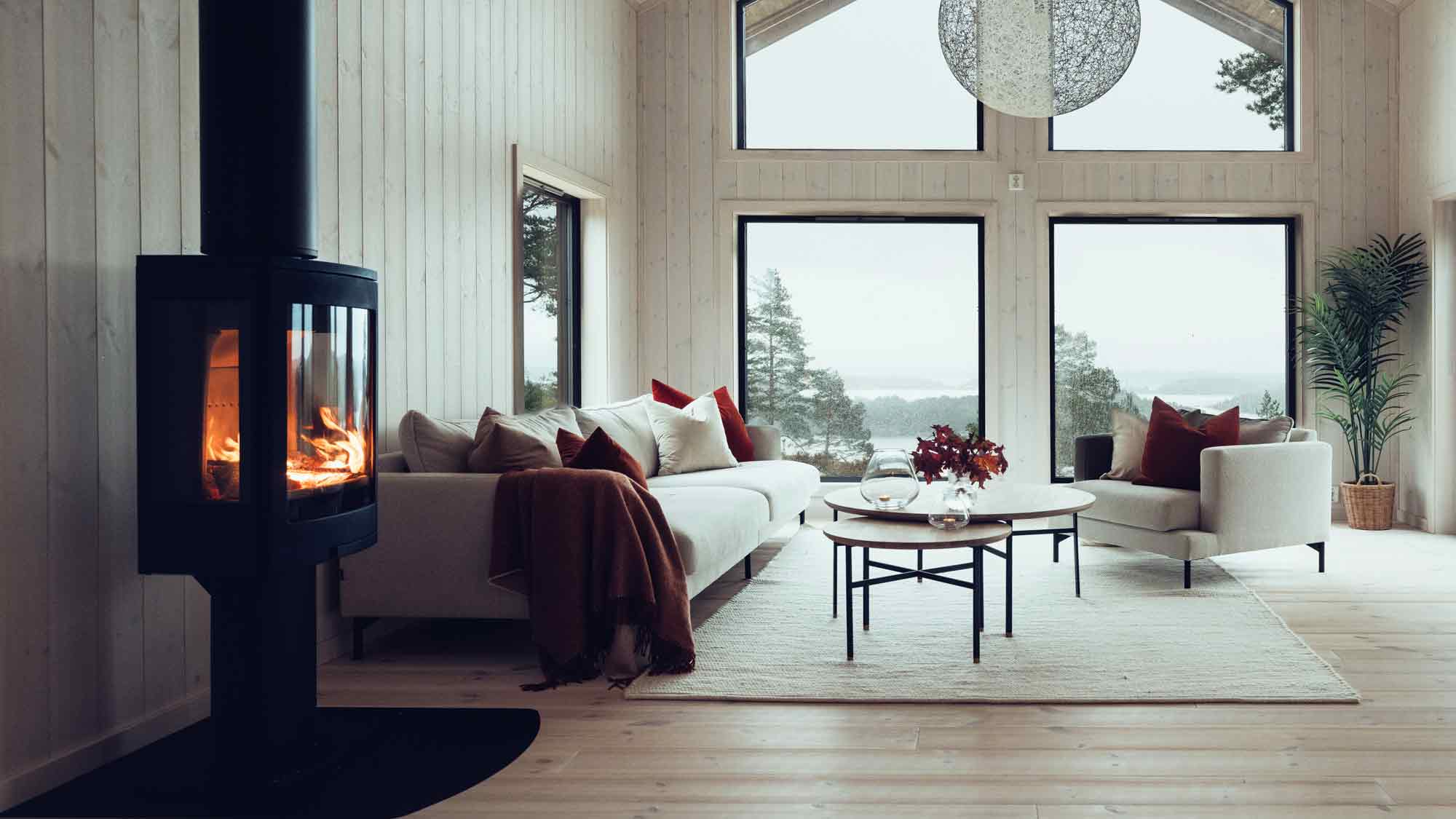
Duo series - creates a great atmosphere, is stylish, and easy to place. Comes in a variety of different variants and options. Heats rooms up to the calculated size of 55 - 130 m²
Key factors in calculation
When calculating the heating area for a fireplace or stove, several factors are taken into consideration to ensure accuracy and optimal efficiency. Some of the important factors include:
Nominal heat output: The maximum heat output the fireplace or stove is designed to produce. This number is used as a starting point to determine the capacity of the unit.
Insulation: The quality of insulation in the room or house. Good insulation helps preserve heat and reduce heat loss, which affects heating needs.
Windows and doors: The number and type of windows and doors in the room. Windows and doors can be points of heat loss, and their insulating properties affect heating needs.
Climate: The prevailing climate in the area, especially average outdoor temperatures. Colder climates typically require higher heat output to maintain the desired temperature.
Roof and wall materials: The materials used in the roof and walls, as some materials have better insulating properties than others.
Room layout: The configuration and layout of the room affect how heat is distributed. Open rooms may require more power to cover larger areas.
Ceiling height: The height of the ceiling in the room. Higher ceilings require more heat to maintain the desired temperature.
Heat-absorbing surfaces: The presence of heat-absorbing surfaces such as carpets or furniture, which can affect how heat is dispersed in the room.
General heat loss: Other potential points of heat loss, such as leaks or poor sealing of the room.
By considering these factors, one can make a more accurate calculation of the heating area, and thus choose a fireplace or stove with an appropriate nominal heat output to meet the heating needs in the specific environment.
Nordpeis has a diverse portfolio and can deliver fireplaces and stoves that suit all homes. We have everything from large, powerful fireplaces to small, compact stoves. Find the fireplace or stove that suits you best. Here you will also find tips on how to calculate the heating needs in your home.
Davos

The Davos series is large and powerful, and can be combined with the heat-retaining PowerStone™. With double glass for extra efficient combustion, air wash for cleaner glass, as well as convenient stop function and self-closing mechanism. A stylish choice for those with high heating needs.
Salzburg

Our heat-retaining fireplace series, Salzburg, provides comfortable and efficient heating. It emits heat for up to 20 hours after the fire with the heat-retaining Powerstone™. Offering a clear view of the flames and good combustion for cleaner glass. A natural choice for those seeking low wood consumption and consistent warmth.
Uno

The Uno series consists of compact stoves with classic Norwegian design, providing you with a clear view of the flames. It comes in several different designs; pedestal, base with wood compartment, or oak legs. Choose with or without side glass. Highly space-efficient, suitable for any home, and the perfect stove for smaller rooms.

